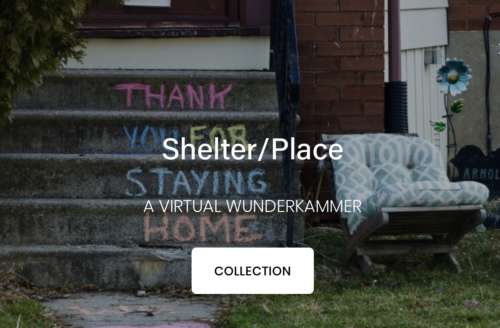
A typical museum collects objects with storied histories that are shared and interpreted for visitors in physical displays or exhibitions. In response to COVID-19 restrictions, a group of University of Guelph students created a museum that is far from typical.
Students in the Introduction to Museology course were crafting their own community museum just as pandemic physical distancing measures began. The collaborative project proceeded but was transformed by the new context.
Shelter/Place: A Virtual Wunderkammer brings together a wide assortment of artifacts, each accompanied by a unique story. Wunderkammer is German for “cabinet of curiosities” and there are 84 objects in the digital collection
“Faced with a tremendous amount of uncertainty in both their personal and academic lives, the students successfully rose to this unprecedented challenge,” said Art Gallery of Guelph director Shauna McCabe, also an adjunct professor at the University and the instructor of the museology course.
“Connecting objects across time and space in the form of their virtual museum, the students have used this unique moment as an opportunity to think about how our current situation reframes the past and prompts us to reimagine the present and future.”
McCabe said that as the pandemic accelerated, ideas that were plausible one week suddenly were not the next. As a hands-on approach became impossible when citizens were asked to stay home in isolation, the virtual space was embraced.
McCabe asked the students to consider how objects around them change when movement and physical contact beyond the home is discouraged and, in many cases, prohibited.
The website features both found and personal artifacts selected by each student in response to their new environment, each accompanied by text describing the origins of the object, its characteristics and its meaning.
One object is lava rock found on a black sand beach during a trip to Iceland, a reminder of opportunities for physical encounters with epic landscapes that are now even farther out of reach. Objects such as a teacup or coffee beans represent social rituals for students that are also now impossible to attain.
A single monarch butterfly wing is accompanied by a description of its complexity and fragility, as well as its association with global biodiversity.
Throughout the course, McCabe said, students focused on the theme of social relevance, studying the inclusive, participatory and engaged characteristics of museums.
“Ultimately, the project embodied this responsiveness, rapidly adapting the idea of the museum to the world around them and approaching their descriptions of everyday objects through a lens of both history and autobiography,” McCabe added. “In light of this, the ‘curiosities’ within their virtual wunderkammer are significant because of their personal resonance, telling stories that also highlight the role of museums in fostering empathy.”
Among the contributors is history major Haiden Vollebregt, who said the pandemic experience has isolated her from loved ones. The significance of her object – a mug that was created and given to her by her mother, Marilyn Vollebregt – has changed.
“In particular, this object is a reminder every day that I am loved deeply and that the most vital parts of life – the strength of human connections, the power of family, compassion within communities – are being maintained,” she said.
More than 40 students contributed objects of personal significance to the project, exploring the extraordinary in the everyday and how value can shift dramatically when a world is faced with uncertain futures.
“My primary goal was to enable students to explore how the ideas they have been reading about work within their daily lives – ideas with relevance for them far beyond this moment,” McCabe said.